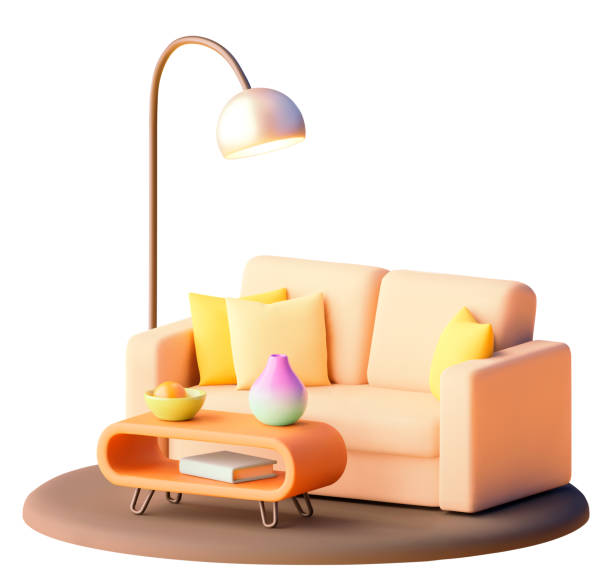
African Home Furnishings: A Journey Through Tradition, Art, and Modernity
African home furnishings are a fascinating blend of tradition, culture, and modernity. These furnishings are more than just items of comfort or utility; they are a testament to the rich and diverse heritage of the African continent. From intricately carved wooden pieces to vibrant textiles, African home furnishings offer a unique aesthetic that combines history, craftsmanship, and contemporary design.
The Rich History and Cultural Significance
African home furnishings have a history that spans thousands of years, rooted deeply in the cultural and social practices of various African communities. Each piece of furniture, be it a stool, table, or decorative item, often carries significant meaning and tells a story about its origins.
Traditional Woodworking
Wood is a primary material used in African furnishings, and the art of woodworking is a revered skill passed down through generations. Different regions have their unique styles and techniques. For instance, the Ashanti people of Ghana are known for their famous stools, particularly the Ashanti stool, which is considered a symbol of power and authority. These stools are often carved from a single block of wood and decorated with intricate patterns that have symbolic meanings.
The Dogon people of Mali are also renowned for their wooden sculptures and furniture. Their pieces often feature complex geometric patterns and human figures, representing their cosmology and religious beliefs. The craftsmanship involved in creating these pieces is extraordinary, reflecting a deep connection between the artisans and their cultural heritage.
Metalwork and Weaving
Apart from wood, African artisans also utilize metals and weaving techniques to create unique furnishings. In regions like Nigeria, bronze casting has been a traditional practice for centuries. The Benin bronzes, famous for their detailed and artistic representations, include not only sculptures but also functional items like plaques and furniture.
Weaving is another significant aspect of African furnishings, with various communities producing textiles that are used for upholstery and decorative purposes. The Kente cloth from Ghana, with its vibrant colors and patterns, is one such example. Each Kente design has a specific meaning, often representing proverbs, historical events, or social status.
The Influence of Nature and Environment
African home furnishings are deeply influenced by the natural environment. The continent’s vast landscapes, diverse flora and fauna, and rich natural resources all play a role in shaping the design and materials used in furniture making.
Sustainable Materials
African artisans have traditionally utilized locally available and sustainable materials. This not only ensures the longevity and durability of the furnishings but also reflects a harmonious relationship with nature. For instance, bamboo and rattan are commonly used in East Africa to create lightweight and sturdy furniture. These materials are not only eco-friendly but also add a natural, rustic charm to the interiors.
Animal Motifs and Patterns
African furnishings often feature motifs and patterns inspired by the animal kingdom. From the majestic lion to the graceful antelope, these representations are a testament to the continent’s rich wildlife heritage. Zebra and leopard prints are popular in textiles and upholstery, adding a bold and exotic touch to the decor. These patterns are not just decorative but also carry cultural significance, symbolizing traits like strength, agility, and resilience.
The Role of Color and Symbolism
Color plays a crucial role in African home furnishings. The use of vibrant and bold colors is a hallmark of African design, reflecting the lively and dynamic spirit of the continent. Each color used in African textiles and furnishings carries specific meanings and symbolism.
Vibrant Textiles
African textiles are renowned for their vibrant hues and intricate patterns. Fabrics like Kente, Ankara, and Mudcloth are not only used for clothing but also for home decor items like cushions, curtains, and upholstery. The colors used in these textiles are often derived from natural dyes, ensuring their richness and longevity.
Red: Symbolizes life, vitality, and energy. It is often used in ceremonial and festive occasions.
Blue: Represents peace, harmony, and love. It is a calming color used in spaces meant for relaxation and reflection.
Yellow: Signifies wealth, prosperity, and fertility. It is associated with gold, a precious resource in many African cultures.
Green: Reflects growth, renewal, and the earth. It is a symbol of agriculture and abundance.
Symbolic Patterns
Patterns and motifs in African furnishings are not merely decorative but are laden with symbolism. For example, the Adinkra symbols from Ghana, often seen in textiles and carvings, convey proverbs, historical events, and philosophical ideas. Each symbol has a distinct meaning, making the furniture not only aesthetically pleasing but also intellectually engaging.
Modern Interpretations and Global Influence
African home furnishings have evolved over time, adapting to modern tastes and global trends while retaining their cultural essence. The fusion of traditional craftsmanship with contemporary design has resulted in unique pieces that appeal to a wide audience.
Contemporary African Designers
Modern African designers are redefining the landscape of home furnishings, blending traditional techniques with innovative designs. These designers are not only gaining recognition in Africa but also on the international stage.
Bibi Seck: Known for his work with the Senegalese design collective, Dakar Next, Seck creates furniture that combines African aesthetics with modern functionality. His designs often feature bold colors and sustainable materials.
Cheick Diallo: A Malian designer who uses traditional weaving techniques to create contemporary furniture. His pieces are known for their intricate patterns and organic forms, reflecting the beauty of African craftsmanship.
Jomo Tariku: An Ethiopian-American designer whose work is inspired by African art and culture. Tariku’s furniture often features clean lines and minimalist designs, with subtle references to traditional African motifs.
Global Influence
African home furnishings have a growing influence on global interior design trends. The unique blend of tradition and modernity, coupled with the use of sustainable materials and vibrant colors, has made African-inspired decor popular worldwide. Many international designers and brands are incorporating African elements into their collections, promoting a cross-cultural exchange of ideas and aesthetics.
Integrating African Furnishings into Modern Homes
Incorporating African home furnishings into modern interiors can add a touch of exotic elegance and cultural depth. Here are some tips on how to seamlessly blend African elements with contemporary decor:
Statement Pieces
Choose a few statement pieces that reflect the essence of African design. This could be a beautifully carved wooden stool, a vibrant Kente cloth cushion, or a metal sculpture. These items can serve as focal points in a room, adding character and a story to the space.
Mixing Textures and Materials
African furnishings are known for their rich textures and use of diverse materials. Mixing different textures, such as combining a rattan chair with a plush Mudcloth cushion, can create a visually interesting and harmonious space. The key is to balance the elements so that they complement each other without overwhelming the room.
Color Accents
Introduce African-inspired colors through accessories and accents. This could be in the form of vibrant throws, rugs, or wall art. These color accents can bring warmth and energy to a space, making it feel more inviting and dynamic.
Cultural Artifacts
Incorporating cultural artifacts, such as masks, pottery, and traditional baskets, can add an authentic touch to the decor. These items not only enhance the aesthetic appeal but also serve as conversation starters, allowing you to share the rich history and significance behind each piece.
The Future of African Home Furnishings
The future of African home furnishings looks promising, with a growing appreciation for sustainable and culturally rich designs. As more people around the world embrace the beauty and uniqueness of African decor, there is a greater emphasis on preserving traditional craftsmanship while innovating for the modern market.
Sustainability and Ethical Practices
With increasing awareness of environmental issues, there is a significant shift towards sustainable and ethical practices in the furniture industry. African artisans and designers are at the forefront of this movement, utilizing eco-friendly materials and traditional techniques that have minimal impact on the environment. This not only ensures the preservation of the craft but also promotes fair trade practices, supporting local communities and economies.
Innovation and Technology
Innovation and technology are playing a crucial role in the evolution of African home furnishings. Designers are exploring new materials, such as recycled plastics and natural fibers, to create eco-friendly furniture. Technology is also aiding in the preservation of traditional techniques, with digital tools being used to document and teach ancient craftsmanship methods to future generations.
Global Collaborations
Collaborations between African designers and international brands are fostering a global appreciation for African home furnishings. These partnerships are not only bringing African designs to a wider audience but also promoting a cross-cultural exchange of ideas and techniques. This fusion of perspectives is resulting in innovative designs that celebrate diversity and creativity.
Conclusion
African home furnishings are a testament to the continent’s rich cultural heritage, artistic prowess, and innovative spirit. From traditional wooden carvings to contemporary designs, these furnishings offer a unique blend of history, art, and modernity. As the world continues to embrace sustainable and culturally rich decor, African home furnishings are poised to play a significant role in shaping the future of interior design. By integrating these beautiful and meaningful pieces into our homes, we not only enhance our living spaces but also celebrate the diversity and creativity of the African continent.



